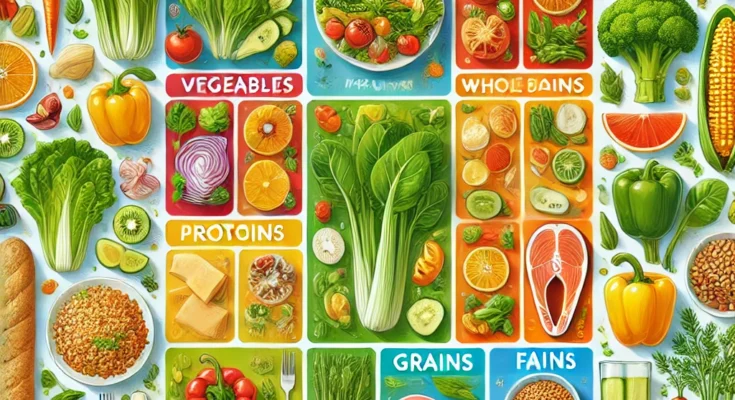When it comes to achieving and maintaining optimal health, building a balanced diet is one of the most crucial steps you can take. But with so much conflicting information, it can be challenging to know where to start. In this guide, we’ll break down the essential nutrients, food groups, and steps you need to create a balanced, nutritious diet that works for your lifestyle.
Why a Balanced Diet Matters
A balanced diet gives your body the nutrients it needs to function correctly. By consuming the right amounts of essential nutrients, you can help your body to:
- Improve energy levels
- Boost immune function
- Support mental health
- Maintain a healthy weight
Understanding the Key Nutrients Your Body Needs
To create a balanced diet, start by understanding the essential nutrients that fuel your body.
a) Carbohydrates
Carbohydrates are your body’s main energy source. Opt for complex carbs like whole grains, vegetables, and legumes, which digest slowly and provide a steady energy supply.
Examples: Oats, quinoa, brown rice, sweet potatoes
b) Proteins
Proteins are vital for building muscle, repairing tissues, and producing enzymes and hormones. Aim to include a mix of plant-based and lean animal proteins.
Examples: Lentils, chickpeas, eggs, chicken, tofu, fish
c) Fats
Healthy fats support brain function, hormone production, and cell structure. Focus on unsaturated fats from plants, fish, and nuts.
Examples: Avocado, olive oil, almonds, salmon
d) Vitamins and Minerals
These micronutrients are essential for immune health, bone strength, and metabolism. Incorporate a variety of fruits and vegetables to cover a broad spectrum of vitamins and minerals.
Examples: Spinach (iron), oranges (vitamin C), dairy (calcium), nuts (magnesium)
e) Fiber
Fiber supports digestive health, aids in blood sugar regulation, and helps you feel full longer. Aim to get fiber from whole grains, fruits, and vegetables.
Examples: Whole grains, berries, broccoli, chia seeds
Building Your Plate: The Ideal Meal Balance
A balanced plate includes a mix of macronutrients and plenty of colorful fruits and vegetables. Here’s a simple rule to follow:
- 50% Vegetables and Fruits: Aim for variety and color to maximize nutrient intake.
- 25% Protein: Choose lean meats, fish, tofu, or legumes.
- 25% Whole Grains: Opt for brown rice, quinoa, or whole-grain bread.
Pro Tip: The more colors on your plate, the broader range of nutrients you’re consuming!
Tips for Healthy Meal Planning
Meal planning can help you stick to your balanced diet without feeling overwhelmed.
a) Plan Weekly Meals
Spend a little time each week planning your meals to make shopping and cooking easier. Choose simple recipes that use ingredients across meals to reduce waste.
b) Prep Ingredients in Advance
Chop vegetables, cook grains, or marinate proteins ahead of time. This can make meal preparation faster and less stressful.
c) Include Snacks
Healthy snacks keep your energy levels steady throughout the day. Opt for options like nuts, yogurt, and fruit.
Common Challenges and Solutions
Even with the best intentions, sticking to a balanced diet can be challenging. Here’s how to handle some common obstacles:
- Busy Schedule: Choose quick recipes or consider batch cooking to save time.
- Budget Constraints: Buy in bulk, use seasonal produce, and avoid processed foods to make your grocery budget go further.
- Cravings: Satisfy sweet cravings with fruit or dark chocolate, and salty cravings with nuts or whole-grain crackers.
FAQs About Balanced Diets
Q: How do I start eating a balanced diet?
A: Begin by making small changes, like adding more vegetables to each meal or choosing whole grains over refined options.
Q: Can I still enjoy treats on a balanced diet?
A: Yes! Treats in moderation can fit into a balanced diet. Focus on nutrient-dense foods 80% of the time and enjoy treats 20% of the time.




